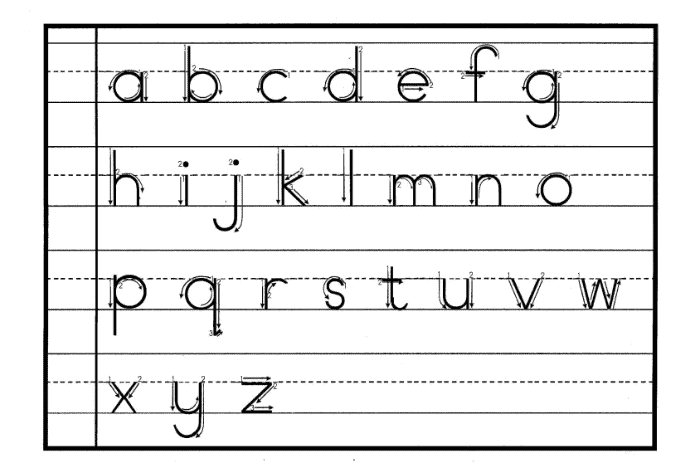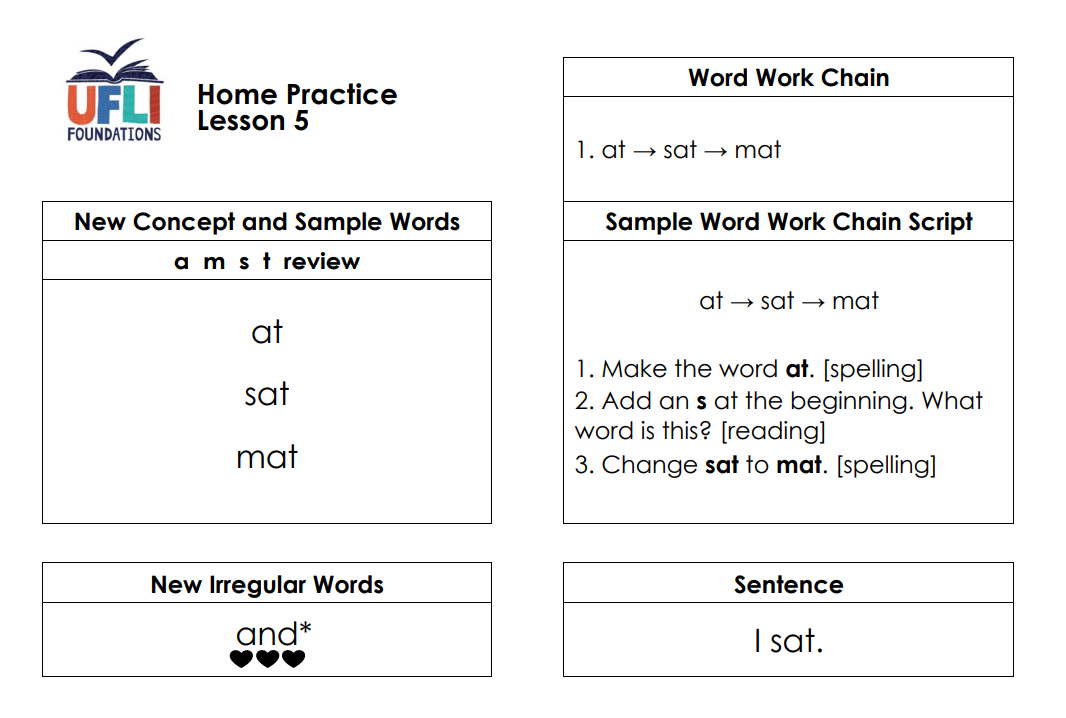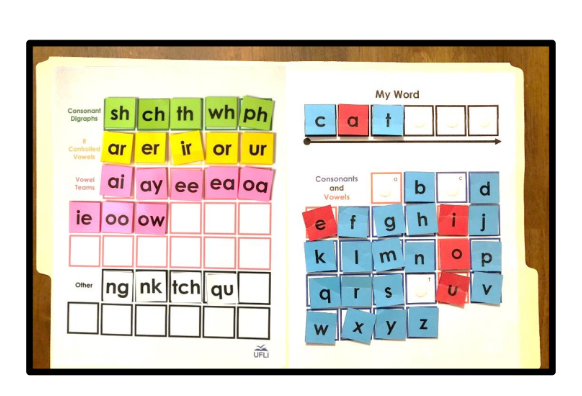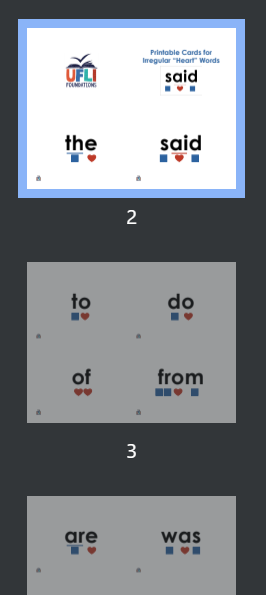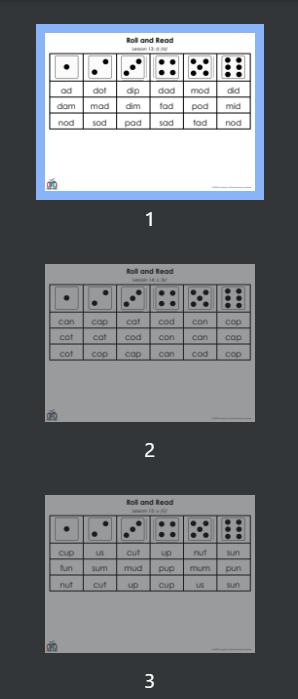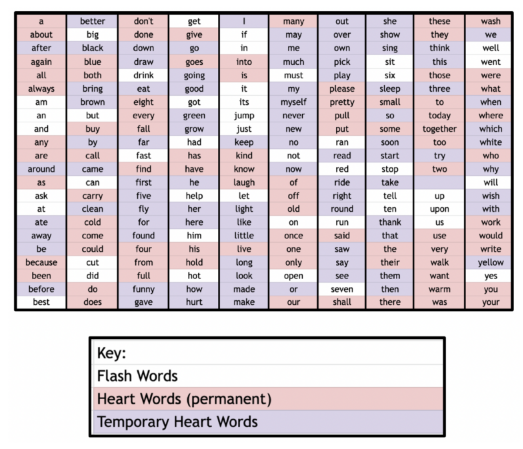
Parents, please follow this simple step-by-step plan.
Parents, in UFLI, the child should be able to read and spell each word in each lesson. Please don’t forget to have your child spell words and sentences!
- Lesson 1 – teach your child how to form “a” correctly. Teach that short a says /a/. Teach how to read and spell the sight word the.
Letters always start from the top down! To teach making a lowercase a, I always chant, “Make the letter c and go up and down.”
- Lesson 2 – teach that m says /m/. Correctly form.
- Lesson 3 – teach that s says /s/. Correctly form.
- Lesson 4 – teach that t says /t/. Correctly form.
Print out these Grapheme Cards. Your child says the SOUND of the letter(s), not the name. Only drill short a, m, s, t. Put the rest away! Add the lesson’s new letter each day.
Show your child how to tap and blend: at, sat, mat. (Do not teach the combination of am or as because the glued sound am and s sounding like /z/ comes up later.)
- Lesson 5 – find Lesson 5-68 here. IGNORE the title “Kindergarten.” I start with Lesson 1 regardless of the grade. Students who know their letters/sounds move faster through these beginning lessons.
Have your child write the words in the lesson’s Word Work Chain or use the Printable Word Work Mat. Put ALL letters away except a, m, s, t. Each day, add the lesson’s new letter! Your child will use this board to do the Word Work Chains in each lesson! OR use the Digital Word Work Mats. Go directly to the Beginner Word Work Map and Intermediate Word Work Map.
You will notice New Irregular Words in the individual lessons. As words are introduced, take them from heart words. Your child has to learn to read and spell these instantaneously, as these are the most common words in English. The blue represents the part that can be sounded out. The heart is the irregular part they must remember by heart.
- Lesson 6 – teach that p says /p/. Correctly form. Find Lesson 5-68 here. Add p to the Grapheme drill pile and the Word Mat.
- Lesson 7 – teach that n says /n/. Correctly form. Find Lesson 5-68 here. Add n to the Grapheme drill pile and the Word Mat.
- Lesson 8 – teach that short i says /i/. Correctly form. Find Lesson 5-68 here, and NOW THE UFLI STORIES START! You will notice the stories are controlled, meaning ONLY the letters and sight words taught previously are included. Lesson 8’s story ONLY contains the following letters: a, m, s, t, p, f, i, and sight words taught thus far. Add i to the Grapheme drill pile and the Word Mat.
HOW TO TEACH THE STORIES – 1. Give your child a chance to attempt to decode independently. 2. Read aloud the story to your child. Point to each word as you read. Pretend you are stuck and model tapping and blending. 3. Now choral read the story slowly with your child. POINT to each word. 4. Have your child read the story aloud. If stuck, the child independently taps and blends. 5. Have your child reread and reread for fluency and accuracy. 6. SAVE all stories to revisit. Children need to POINT as they tend to memorize these!
- Lessons 9 – 12 ~ take the lesson from Lesson 5-68, correctly form new letters, and read, reread, reread the corresponding UFLI stories. Add corresponding heart words and new letters to the Grapheme drill and Word Mat.
- Lesson 13 – 128 ~ take the lesson from here – Lesson 69-128, correctly form new letters, and read, reread, reread the corresponding UFLI stories. Add corresponding heart words and new letters to the Grapheme drill and Word Mat. Have your child read words from the lesson’s corresponding Roll and Reads! Borrow dice from a game. Have your child roll the dice and read the 3 words. Cross off. Take turns rolling, tapping, and blending until all 6 columns have been read.
UFLI Trick Words
The white words can be tapped out. They are phonetically correct words.
The pink words have to be memorized by heart. Some parts of the word might be sounded out, but these words have phonetic irregularities.
The purple words come up in the UFLI curriculum before the phonetic element is officially taught, so these words are temporary heart words. Once the child is formally taught the new phonetic element, these words are considered phonetically correct.
02/01/24
Edited on O3/14/24
![]()

